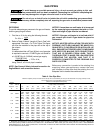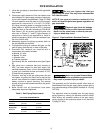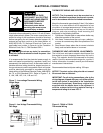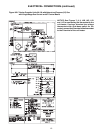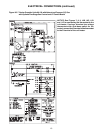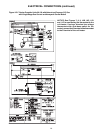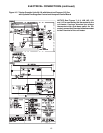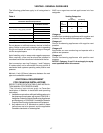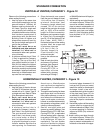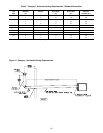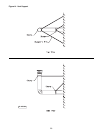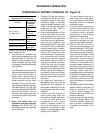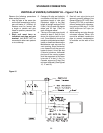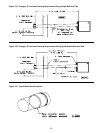
16
VENTING*
All unit heaters must be vented! All Venting installations shall be in accordance with the latest edition of Part 7,
Venting of Equipment of the National Fuel Gas Code, ANSI Z223.1, or applicable provisions of local building codes.
Refer to notes* below for Canadian installations. Refer to Figures 12-19.
CARBON MONOXIDE! Your venting system must not be blocked by any snow, snow
drifts, or any foreign matter. Inspect your venting system to ensure adequate ventilation exists at all
times! Failure to heed these warnings could result in Carbon Monoxide Poisoning (symptoms include
grogginess, lethargy, inappropriate tiredness, or fl ue-like symptoms).
When an existing heater is removed or replaced in
venting system, the venting system may not be properly
sized to vent the attached appliances. An improperly
sized vent system can cause formulation of condensate
or leakage or spillage of fl ue gases.
The following steps shall be followed with each appliance
connected to the venting system placed in operation,
while any other appliances connected to the venting
system are not in operation:
1. Seal any unused openings in the venting system;
2. Inspect the venting system for proper size and
horizontal pitch, as required in the National Fuel
Gas Code, ANSI Z223.1 and these instructions.
Determine that there is no blockage or restriction,
leakage, corrosion and other deficiencies, which
could cause an unsafe condition.
3. In so far as practical, close all building doors and
windows and all doors between the space in which
the appliance(s) connected to the venting system
are located and other spaces of the building. Turn on
clothes dryers and any exhaust fans, such as range
hoods and bathroom exhausts, so they shall operate
at maximum speed. Do not operate a summer
exhaust fan. Close fi replace damper.
4. Follow the lighting instructions. Place the appliance
being inspected in operation. Adjust thermostat so
that the appliance will operate continuously.
5. After it has been determined that each appliance
connected to the venting system properly vents
when tested as outline above, return doors, windows,
exhaust fans, fi replace dampers, and any other gas-
burning appliance to their previous condition of use.
6. If improper venting is observed during any of the
above tests, the venting system must be corrected
immediately so that the system conforms with
the National Fuel Gas Code, ANSI Z223.1. When
resizing any portion of the venting system, the
venting system should be resized to approach the
minimum size as determined using the appropriate
tables in Appendix G of the National Fuel Gas Code,
ANSI Z223.1.
The unit heater shall be connected to a factory built
chimney or vent complying with a recognized standard,
or a masonry or concrete chimney lined with a lining
material acceptable to the authority having jurisdiction.
Venting into an unlined masonry chimney is
prohibited.
ADDITIONAL REQUIREMENTS FOR CANADIAN INSTALLATIONS
*The following instructions apply to Canadian installations in addition to installation and operating instructions.
1. Installation must conform with local building codes, or in the absence of local codes, with current
CGA-B149.1, Installation Codes for Natural Gas Burning Appliances and Equipment, or CGA-B149.2, Installation
Codes for Propane Gas Burning Appliances and Equipment.
2. Any reference to U.S. standards or codes in these instructions are to be ignored and the applicable Canadian
standards or codes applied.



